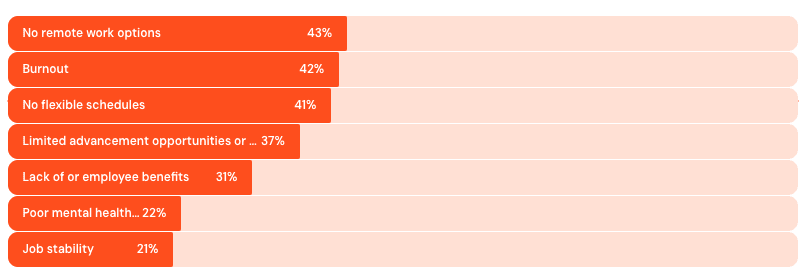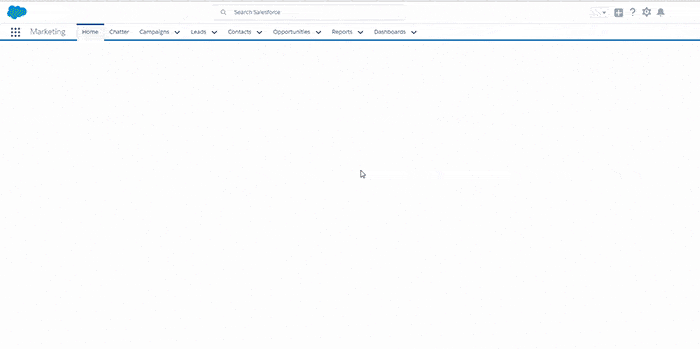Employee Attrition, Churn, and Turnover: What’s the Difference?
- Published:
- Updated: June 26, 2024


A lot of time, money, and energy goes into recruiting and training new employees, and losing this talent takes a toll on the overall productivity, growth, and success of an organization. To overcome this, companies must measure the efficiency of their employee retention with metrics like employee attrition, turnover, and churn rates.
In this article, we’ll explore employee attrition, compare the difference between employee churn and turnover, showcase the cost of employee turnover, breakdown key retention metrics, and share strategies to prevent employee departure in your organization.
What Is Employee Turnover?
Employee turnover rate is the percentage of employees that:
- leave your company after a certain period of time AND
- That you intend to refill the position.
If your company had a hundred employees at the start of the year and 10 of them quit by the end of that year, your employee turnover rate is 10%. In fact, the average global turnover rate is 10.9%, according to LinkedIn.
Voluntary vs. Involuntary Turnover
Employee turnover is divided into two categories – voluntary and involuntary. Employees who voluntarily resign fall are voluntary, while employees whose employment is terminated by the company is involuntary.
The implications of each category are divided this way:
- Involuntary turnover indicates poor hiring. Reducing the involuntary turnover rate is a matter of hiring better candidates and to achieve that the recruitment team needs to improve its candidate screening processes.
- Voluntary turnover, on the other hand, indicates deeper issues within the organization and especially with the work culture.
While both contribute to the overall turnover rate, companies must pay close attention to voluntary employee turnover because of its larger implications. There will always be some voluntary turnover, as employees will leave the company when they receive a better offer (in terms of pay, designation, role, and so on) and not necessarily because of issues with internal processes or management.
When the turnover rate is high and consistent, however, you know you have an internal problem.
How do you calculate employee turnover?
The employee turnover formula is: (Year, quarter, or month employee departures/ average headcount) * 100
 For example, if you averaged 100 employees over a one-year period and 25 employees left, your annual employee turnover rate is 25%.
For example, if you averaged 100 employees over a one-year period and 25 employees left, your annual employee turnover rate is 25%.
What Is Employee Attrition?
An employee’s departure is considered attrition if it meets the following criteria:
- The departure is voluntary.
- The company is not rehiring or re-filling the position.
An example of employee attrition may be an employee who retired or quit because they’re moving to another location. Attrition is not always a sign that something is wrong in an organization and may be a part of large enterprise strategic decision.
How do you calculate employee attrition?
The employee attrition rate formula is:
(Average number of departures in a given period / Average number of employees in that period) * 100

For example, if you started the quarter with 100 people and ended it with 90, that quarter’s employee attrition rate is 10%.
What Is Employee Churn Rate?
A company’s churn rate, or employee churn rate, refers to the number of employees leaving the organization during a specified time period, and is the combination of attrition and turnover. A percentage often represents employee churn rate. Monitoring your company’s employee churn rate is important because it impacts productivity, business performance, and growth. Employee churn refers to the combined numbers of an organization’s employee attrition and turnover rate.
How do you calculate employee churn?
The employee churn formula is:
(Number of employees left/ total number of employees remaining during a year, quarter, or month) * 100.
 For example, if four employees quit the organization, and there are a total of 100 remaining, their monthly churn rate is 4%.
For example, if four employees quit the organization, and there are a total of 100 remaining, their monthly churn rate is 4%.
What's the Difference in Employee Attrition, Churn, and Turnover?
If you’re still unsure of the small and nuanced differences between employee attrition, churn, and turnover, the following chart should help clarify any confusion:
Voluntary or Involuntary? | Do you plan to backfill the role? | Formula | |
Employee Attrition | Voluntary | No | (Average number of departures in a given period / Average number of employees in that period) * 100 |
Employee Turnover | Both | Yes | (Year, quarter, or month employee departures/ average headcount) * 100 |
Employee Churn | Both | Either | (Number of employees left/ total number of employees remaining during a year, quarter, or month) * 100 |
How Does a High Churn Rate Affect an Organization?
Here are some of the ways employee churn affects the organization.
1. Lost productivity
In some cases, the loss of a valuable employee– especially one with hard-to-replace skills– leads to a significant loss of productivity in the team, as all of their tasks may grind to a halt until a suitable replacement is found.
Even if there are other people with similar skills available in the team, taking on the workload of another employee in addition to their own leads to delays in deliverables.
2. Knowledge loss
While working in an organization, employees gain unique experience and knowledge by experimenting, making mistakes, and learning. When an employee decides to walk out of an organization, it takes a lot of time and effort to rebuild the lost valuable institutional knowledge.
3. High recruiting costs
Employee churn affects an organization financially because of the high costs involved in recruiting, hiring, and training.
According to SHRM, the cost to replace a worker is six to nine months of the annual salary for their position. This means the cost of replacing an employee earning a $35,000 yearly salary could be anywhere from $17,500 to $26,250.
4. Damaged company reputation
Incidents like the great resignation that lead to high churn rate can damage a company’s reputation, which can dissuade customers and investors. It also becomes a challenge for the talent acquisition teams to hire top talent for a company with a high churn rate.
5. Negative workplace culture
A high employee churn rate can create a hostile workplace culture that impacts both productivity and worker health. Employees who are insecure about their position in the company are likely to engage in reckless or questionable behaviors, which contributes to disengaged and frustrated employees.
What Factors Contribute to High Employee Turnover?
While there are many factors for organizations that experience high employee churn – and this has drastically evolved post-COVID. In a LinkedIn survey, no remote work options and burnout were the two most commonly cited reasons for employee churn:

Below, we’ll explore five of these common employee churn factors:
1. Poor work culture
Most corporate leadership believe that an employee values their salary over everything else. Pay them well and they’ll be happy. While that may be true, it is far from the painting the entire picture.
Glassdoor surveyed over 5,000 employees spread across the US, the UK, France, and Germany in 2019 and found that 56% of workers valued work culture over a higher salary. 56% of the respondents said they would stay with a company that paid less than the competition if it had a more positive work culture.
That is an incredible revelation and points to one of the biggest reasons for voluntary employee turnover – toxic work culture.

Work culture includes anything that affects an employee’s behavior and attitude. Valuing their work, offering fair compensation, added benefits, workplace facilities, clean working environment, diverse peers, activities that foster socializing, etc., positively impact an employee’s attitude and behavior and enhance the workplace culture.
This not only leads to higher retention rates but also aligns the employee’s goals with the business goals and both grow together.
2. Strict in-office work policy
COVID showcases that organizations not only can accommodate remote and hybrid work, but can flourish. Companies who have reversed these trends post-COVID and mandated in-office work have experienced higher levels of employee turnover than those who have maintained a hybrid or remote work model.
It reduces flexibility and autonomy for employees and eliminates the possibility of a better work-life balance provided by remote or hybrid working options. This lack of adaptability in workplace settings can lead to increased employee dissatisfaction and, ultimately, higher turnover rates. Employees are content finding new opportunities at organizations that are more flexible in their work policy.
3. Employee burnout
Employee burnout is a major factor causing high churn rates in organizations. The relentless pressure to perform without adequate rest or support can lead to mental, emotional, and physical exhaustion, reducing productivity and enthusiasm. Over time, if unaddressed, this can lead to increased absenteeism, lower job satisfaction, and eventually push employees to seek more supportive work environments, hence exacerbating employee churn.
4. Lack of career growth and learning opportunities
A report by BuiltIn found that 43% of employees cite a lack of career growth to be the reason for leaving their company. This is why its critical for organizations to create a learning and development strategy.
Career growth is no more limited to climbing the designation ladder; it also includes enhancing knowledge and increased responsibilities. An employee who gets the opportunity to learn and acquire new skills through corporate training, or the opportunity to take on more diverse responsibilities, will be contented with the company even if they haven’t received a designation or pay raise.
Employees in companies that don’t foster a culture of upskilling feel their career has plateaued and tend to look for a job change.
This is why employees today gravitate towards startups even though the work hours and expectations may be exceedingly high. Startups offer employees an environment where they are able to take on multiple responsibilities in diverse fields, and provides them the freedom to learn the skills needed to fulfill those responsibilities. Employees value learning and growth because it progresses their careers.
5. Bad managers & poor leadership
Toxic work culture, a lack of career growth opportunities, and poor leadership make up the trifecta that leads to maximum employee turnover.
Strong managers and great leadership are important today because managers are the ones who drive all other factors within the organization – they influence the culture, they make decisions on employee training programs, their attitude defines the collective workplace attitude, and so on.
SilkRoad Technology conducted a survey on how important onboarding processes were for employee retention. Close to 10% of respondents said they left a company because of a poor onboarding experience and 37% of these said the onboarding experience was bad because their managers did not play a critical role in supporting their onboarding experience. Employees expect their managers to be influential figures in their careers right from the onboarding stage.
A positive attitude among the leadership team is indicative of a company that is growing and succeeding. This encourages employees to stay – they want to be a part of a company that is going places.
6. No employee recognition
An article by NBCNews reported that 79% of employees who leave their company cite a lack of appreciation as one of the major reasons for leaving. Not celebrating employees’ success makes them feel undervalued.
A lack of employee appreciation is an extension of bad managers/leadership and poor HR processes.
Why do managers fail to appreciate their employees? There seem to be barriers that hold managers back from appreciating employees, some of them being that managers find it awkward to praise their employees, the fear that employees will expect recognition all the time, and a lack of time.
The result is that 65% of American employees said they weren’t appreciated even a single time the entire year in 2018.
Recognition is a natural motivator. It makes people feel good about themselves and their work and they tend to continue performing well. The lack of recognition creates a toxic environment in which employees try to exit as fast as they can.
7. The lack of two-way feedbacke development
When employees have a platform to give the company, the leaders, and the processes their personal feedback, they feel valued. Having your opinion heard is another form of recognition.
This is another reason why employees gravitate towards startups. In a smaller team, employees can speak and have their opinions heard. They have a chance to impact the company and the products/services, and this gives them a sense of investment which increases their will to stay in the company.
On the flip side, in companies where there is no platform or scope for feedback, employees feel their opinion is not valued. They feel unheard and unseen and don’t have a sense of investment in the company’s growth. This eventually leads to a lack of loyalty and employees ultimately leave the company.
Having a two-way feedback system is important not only because employees want their voices to be heard, but also because employees want their leaders to give them performance feedback so they can improve.
How To Lower Employee Churn Rate In Your Organization?
Here are a few tips to help you lower your organization’s employee churn rate.
1. Invest in employee learning and development
Employee development is no longer an optional perk reserved only for certain positions or projects. With so many complex applications being adopted by organizations, learning and development are expected to be an ongoing activity by today’s talent.
Training facilitates self-growth and enables the resources to contribute better. It also sends a message that the employer values its people and is willing to invest in their success.
Providing a clearly laid-out employee development plan for advancement and upskilling is an excellent strategy for reducing employee churn. However, when daily tasks bog down your staff, they can’t spare time for training. And traditional methods like instructor-led classroom training make it more difficult for employees to participate as they are time-consuming and can overwhelm learners with too much information.
So how can organizations enable continuous training for their employees?
The solution is self-paced learning. Self-paced learning enables employees to access learning materials and go through training at their convenience and at a pace that works best for them.
A digital adoption platform like Whatfix enables self-paced learning for your employees. Create interactive walkthroughs and videos to train your employees on any enterprise application. Whatfix’s self-paced and interactive on-the-job training solution augments training by helping employees learn while doing within the business application.

2. Improve your benefits & perks package
Benefits and perks have a similar effect as rewards and recognitions. Benefits like flexible work hours, the option to work from the office or remotely, unlimited PTO, travel allowance, medical insurance, sabbatical leave, and so on show employees that the company truly cares.
Another advantage of benefits and perks is that it is applied to all employees. Rewards and recognitions depend on performance, but benefits are a gift from the company to all its employees. This creates a sense of inclusivity among employees.
Once you have a proper feedback system in place, you will know from your employees what they expect from the company, and the benefits and perks can be tailored based on the feedback you get.
3. Allocate the right resource to the right job
If managers allocate a resource to a task that does not align with their skills, it can negatively impact productivity.
If the provided resources are underqualified, employees may feel frustrated or burned out, and deliverables may be delayed. On the other hand, if the resources are more experienced and skilled, they might feel their potential is not being recognized. In either case, the chances of employees looking for opportunities elsewhere are high. As such, allocating the right resource for the right job is essential to ensure employee satisfaction with their role.
4. Organize effective team-building activities
Facilitating strong bonds between colleagues enhances employee engagement and creates more productive teams. Moreover, if employees feel they have made meaningful and valuable relationships at the workplace, they are more likely to stick around.
Organizing team-building activities to promote a cohesive work culture is a great way to increase engagement. One example is the collaborative training program, which is where employees simultaneously share their knowledge and expertise, teaching and learning from one another. When people learn and work collaboratively, it creates a healthy work environment, builds a positive work culture, and creates greater employee satisfaction– ensuring long-term retention.
Other effective team-building activities include:
Monthly team lunches
Weekly informal meetings
Discussion groups
Charitable events
5. Share regular feedback through two-way communication
Sharing constructive feedback with employees helps them understand their performance from a manager’s perspective. Scheduling regular feedback sessions with employees enables managers to acknowledge their strengths and address areas of improvement. When employees know their leaders prioritize individual development, it boosts their motivation and ultimately increases retention.
It’s also important to ensure that feedback is a two-way street. While giving feedback is necessary to help your workforce grow, it’s also important to take feedback. Employee feedback in the form of anonymous surveys or one-on-one sessions helps them raise their concerns or expectations about their role or company. This makes the employees feel valued and helps HR and managers understand their concerns and provide appropriate solutions.
6. Focus on a positive work culture
An organization with a happy work culture is more likely to retain its employees for longer. It’s crucial to enforce a respectful and supportive work culture for your employees to feel welcomed, respected, and valued.
The focus of creating a positive work culture should be in:
- Establishing effective communication strategies between different departments and within a team.
- Providing enough support to employees, especially during challenging times.
- Ensuring that there is no discrimination or bullying within the organization.
- Valuing every employee’s efforts adequately.
For your company to succeed and grow, the entire organization has to believe in its mission, vision, and values. If employees are not aware of the company values, they cannot align their goals with that of the company.
If possible, include your employees when defining the company’s values. This will instill a strong sense of ownership and they will not only follow the values, but they will also promote them.
If the company values are already defined, make sure employees are aware of them. The values should be a part of the hiring and onboarding process. When employees believe in the company’s values, they tend to remain loyal employees.
7. Hire the right fit
Train your hiring staff to identify what a promising candidate looks like. You can significantly reduce your churn rate by focusing on recruitment efforts, making the interview process robust, and hiring the right people.
It’s important to clearly define the role and position you’re recruiting for. Don’t just focus on the required skill set but also on the kind of candidate that would excel in the role. Ensure the candidate fits the profile and that the company culture and vision match the candidate’s career goals.
8. Recognize and reward employees
Who doesn’t appreciate a little extra incentive as a reward for good performance? While a positive work culture can be a great start for keeping employees happy and satisfied, you must also ensure the role is financially satisfying. The rewards could be in the form of bonuses and different profit-sharing plans.
Besides financial rewards, recognition can also include benefits and non-cash perks. For example, health and welfare plans, adequate retirement plans, childcare plans, or different loyalty programs for travel or fitness schemes are prime benefits to offer employees.
Employee appreciation through rewards and recognition play a big part in reducing the employee turnover rate. It is, in fact, a simple and low-cost strategy to put in place that gives companies high returns, in the form of employee retention.
A report by SurveyMonkey found that 63% of employees said regular recognition is a key reason for not changing their job.
For it to work, however, employee recognition programs should become a part of the work culture, a part of the business process. Without rewards and recognition processes in place, the barriers we mentioned earlier will come into play and recognition will be a sporadic, random event rather than something employees look forward to.
9. Pay attention to engagement
Keeping employees engaged is critical to business success because when employees find their jobs challenging, engaging, and rewarding, they’re more likely to stick around and invest themselves in their work.
Employees who find passion and purpose at work are more than three times as likely to stay with their organizations as those who don’t.
However, employee engagement for many organizations is limited to the results of engagement surveys once a year, which is not enough to be impactful. HR teams need to take appropriate actions based on survey results and work to build a culture of engagement in the company throughout the year.
Some significant factors to consider for improved employee engagement include:
- Company culture
- Team communication
- Company reputation
- Career development opportunities
10. Revise your onboarding processes
The employee onboarding process is the first critical factor in building an engaged workforce committed to your company for the long haul. Therefore, review your current recruitment and onboarding process to ensure that it helps set the right expectations for new hires. A strong onboarding process increases employee engagement, invokes a sense of loyalty in new hires, promotes proper training and adoption of business processes, and helps improve long-term employee retention rates.
11. Offer opportunities for employees to change roles or advance
Organizations need to focus on providing career development opportunities for their workforce. This means offering to help employees reskill themselves to be promoted or moved into a new role if they want to try something different. This helps employees stay motivated and engaged with their work, enables them to contribute more skills to the company, helps them stay competitive, showcases that the company is willing to invest in them for the long haul, and reduces voluntary employee separations.
12. Create robust documentation
In the event your employees do leave, you need to have a succession plan. The key to an effective succession plan is being prepared with stellar process documentation, specifically handover documentation that allows leaving employees to leave detailed guidance and tutorials on how to complete important responsibilities and tasks they’re leaving behind.
13. Conduct exit interviews
Getting feedback from employees who are leaving is a great way to learn what went wrong and what the company could have done differently. Exiting employees are also more relaxed and open so you can expect honest criticism.
Here are some questions you can ask so you get valuable, actionable feedback:
- Why have you decided to leave your position at XYZ?
- Do you have any feedback or suggestions for the management?
- What did you love about working here?
- Were you satisfied with the training programs? Was there an area you would have liked to be trained on?
- Did the company and its vision support your career goals?
If you notice, most of these questions give you valuable insights into the other points mentioned in this article. It helps you improve your training programs, managerial skills, benefits and rewards, and so on. Exit interviews are a great source of feedback that will help you reduce the employee turnover rate.
An organization is only as good as its employees. And employee churn, apart from affecting a business in terms of money, is detrimental to employee productivity, morale, and engagement.
That’s why every organization needs to work on minimizing employee churn by adopting employee retention strategies and hiring right from the get-go. Investing in your employees’ continuous development with modern employee training software such as the digital adoption platform can help engage and retain valued talent within your company, which is proven to be productive, profitable, and motivated.
Using digital adoption platforms as your training software helps deploy the most effective employee training and development programs within your organization. It empowers employees to upskill themselves on the latest tools, applications, or processes without disrupting their workflow and productivity. DAP provides real-time guidance in the form of step-by-step walkthroughs, pop-ups, and tooltips. It’s the best resource to make your employee development plans future-ready and valuable.
Software clicks better with Whatfix's digital adoption platform
Enable your employees with in-app guidance, self-help support, process changes alerts, pop-ups for department announcements, and field validations to improve data accuracy.
Thank you for subscribing!


